Sql Count Query

Query Steps Sql Select Location Density From Select Location Count Download Scientific Diagram
Welcome To Techbrothersit Tsql How To Get Row Count Of All The Tables In Sql Server Database

Using Count With Distinct In Sql Server 08

Transact Sql Count Vs Count Column Vs Count 1 The Hammer The Hammer

9 Queries To Explain Sql Count Function Mysql And Sql Server

Ms Sql Advice Count Vs Exists
The SQL COUNT function is used to count the number of rows returned in a SELECT statement.

Sql count query. Below is the query with my tweak with all due respect and credit to Glenn B. By default, SQL Server Count Function uses All keyword. COUNT will use indexes, but depending on the query can perform better with non-clustered indexes than with clustered indexes.
If you’re wondering about the VALUE keyword – all queries return JSON fragments back. Delete Duplicate Rows in SQL Server 05 and 08. This COUNT example will only return 1, since only one website_name value in the query's result set is NOT NULL.
However this query returns 17 because there are 17 rows in the portstable:. COUNT function only includes NOT NULL values. However, if you ran the next SELECT statement that uses the COUNT function:.
Subqueries can return individual values or a list of records;. Counting for each group should come in descending order,. Third, the HAVING clause gets groups that have Total greater than 100.
SQL COUNT Syntax SELECT COUNT (expression) AS resultName FROM tableName WHERE conditions The expression can be *, column name or DISTINCT column name. The SQL COUNT(), AVG() and SUM() Functions. To get the partition details of all the tables and the number of records in each partition, you just need to remove the group by clause from the above query and add either partition_id or partition_number from the sys.dm_db_partition_stats view in the select list.Below is the sample query.
You can use it as an aggregate or analytic function. SQL Server COUNT () is an aggregate function that returns the number of items found in a set. The following illustrates the syntax of the SQL COUNT function:.
If a race condition existed, when the first instance of the script wakes up, the result of the FOUND_ROWS( ) it executes should be the number of rows in the SQL query the second instance of the script executed. The COUNT(*) returns the number of rows in a set. If you specify DISTINCT, then you can specify only the query_partition_clause of the analytic_clause.The order_by_clause and windowing_clause are not allowed.
You can count either all rows, or. You can use the COUNT function in the SELECT statement to get the number of employees, the number of employees in each department, the number of employees who hold a specific job, etc. If you specify expr, then COUNT returns the number of rows where expr is not null.
Write an SQL query to fetch the count of employees working in project ‘P1’. You can use COUNT(*) as the Projection clause in queries of this general format to obtain information from the SMI tables. The SQL COUNT function is an aggregate function that returns the number of rows returned by a query.
For example, you can use the COUNT() function to get the number of tracks from the tracks table, the number of artists from the artists table, playlists and the number of tracks in each, and so on. To see how to delete all the duplicate records in one query using CTE read article:. It does not matter what values are stored in the records.
But when you run them, this is not the case. All these 3 expressions work with MS SQL Server, Oracle and mySQL. Second, the GROUP BY clause groups the selected rows by OrderID.For each order that we have only one group that contains OrderID and Total;.
See this SQL Fiddle. The function returns only count for the rows returned after DISTINCT clause. The COUNT(DISTINCT expression) returns the number of distinct non-null values.
COUNT (DISTINCT expression) evaluates expression for each row in a group, and returns the number of unique, nonnull values. The SQL query using Count in HAVING clause. SQL ROW_NUMBER() Function Overview.
Calculates the number of records returned by a query. SQL queries for Database Management. COUNT is the easiest aggregate function to begin with because verifying your results is extremely simple.
The query below is the inner query we just saw which shows a list of distinct values in the ReportsTo column. COUNT () returns 0 if there were no matching rows. The COUNT () function is used with SQL SELECT statement and it is very useful to count the number of rows in a table having enormous data.
Write an SQL query to find the maximum, minimum, and average of the employees. COUNT (ALL expression) evaluates expression for each row in a group, and returns the number of nonnull values. The COUNT () function accepts a clause which can be either ALL, DISTINCT, or *:.
In this function, NULL values are not counted at all or in technical terms;. Subqueries must be enclosed with parenthesis. COUNT is an aggregate function in SQL Server which returns the number of items in a group.
The following illustrates the syntax of the ROW_NUMBER() function:. (The Total column alias is used for formatting the output).;. Although expr can perform a calculation on a field, Count simply tallies the number of records.
Note that when we run this query alone, NULL is displayed in the result set, but this NULL value is not counted as a distinct value in the example query shown above when we count the number of distinct values. NULL values are not counted. COUNT is a SQL aggregate function for counting the number of rows in a particular column.
There is a system view named "columns" in every database by which you can get the list of every kind of entities that exist in your database.You can only access this view by the schema called "information_schema" like information_schema.columns. Operands in expr can include the name of a table field or function (which can be either intrinsic or user-defined but not other SQL. Primarily, the COUNT () function returns the number of records returned by a SELECT query.
It means that SQL Server counts all records in a table. SQL COUNT (column_name) Syntax The COUNT (column_name) function returns the number of values (NULL values will not be counted) of the specified column:. Moreover, the HAVING clause is used with COUNT function for restricting only those employee who got paid two or more times.
The ROW_NUMBER() is a window function that assigns a sequential integer number to each row in the query’s result set. In this tutorial, you have learned various techniques to count the number of rows in a table using the MySQL COUNT function. The Rows Should Be Ordered By The Names In Alphabetical Order.
For these cases, use COUNT_BIG instead. SQL Count function The Count function works with the collaboration of the SELECT function. T-SQL also has a COUNT_BIG() function that works exactly like COUNT(), except that COUNT() returns an int data type and COUNT_BIG() returns a bigint data type.
SELECT COUNT (column_name) FROM table_name;. How the query works. SELECT , COUNT(*) Count_Duplicate FROM Table_name GROUP BY HAVING COUNT(*) > 1 ORDER BY COUNT(*) DESC.
The SQL COUNT () function returns the number of rows in a table satisfying the criteria specified in the WHERE clause. For information about sysextents and other SMI tables, see the IBM® Informix® Administrator's Reference chapter that describes the sysmaster database. The T-SQL query below uses the COALESCE() function to iterate through each of the tables to dynamically build a query to capture the row count from each of the tables (individual COUNT queries combined using UNION ALL) and provides the row counts for all the tables in a database.
SELECT COUNT(website_name) FROM websites;. The function COUNT() is an aggregate function that returns the number of items in a group. Here, we would be using aggregate function count() with the SQL where clause-SELECT COUNT(*) FROM EmployeeSalary WHERE Project = 'P1';.
The Microsoft SQL Server 12 SQL Count F. SQL COUNT () group by and order by in descending To get data of 'working_area' and number of agents for this 'working_area' from the 'agents' table with the following conditions - 1. SQL> SELECT * FROM employee_tbl;.
COUNT (ALL | DISTINCT expression). COUNT will always return an INT. The following shows the syntax of the COUNT () function:.
SELECT COUNT(ip_address) FROM `ports`;. First, for each order line item, SQL calculates the total amount using the SUM function. The COUNT () function returns the number of rows that matches a specified criteria.
To understand COUNT function, consider an employee_tbl table, which is having the following records −. In this tutorial, you will learn how to use the ROW_NUMBER() to assign a sequential number to each row in a query result set. The COUNT function only counts 1, not NULL values, therefore, the query returns the number of orders based on the corresponding status.
A subquery is a SQL query within a query. The SUM() function returns the total sum of a numeric column. SQL COUNT (*) with GROUP BY clause example To get the number of orders by customers, you use the COUNT (*) function with the GROUP BY clause as the following query:.
SQL Member Count In This SQL Challenge, Your Query Should Return The Names Of The People Who Are Reported To (excluding Null Values), The Number Of Members That Report To Them, And The Average Age Of Those Members As An Integer. COUNT (ALL | DISTINCT expression);. For the demo, I am using employee table that stores the information about the employees.
The COUNT() function returns the number of rows that matches a specified criterion. Select SQL query to collect records from the table Adding restriction by using select SQL query to collect records from the table Between two ranges in query Distinct SQL command to exclude duplicate records Grouping records by using group by query Having command to group data with count, avg etc SQL inner join to get matching records. If you want to follow along.
For return values exceeding 2^31-1, COUNT returns an error. COUNT returns the number of rows returned by the query. Let’s start with the easiest SQL statement of all which creates a new database.
In the following SQL query, we will return the rows containing employee names, the number of times salary paid and its sum only for those which salary paid is greater than 3000. SELECT COUNT(DISTINCT ip_address) FROM `ports`;. This returns 5 because it only counts distinct values and the subquery is not needed anymore.
The syntax of the SQL COUNT function:. For example, you could use Count to count the number of orders shipped to a particular country or region. The COUNT(expression) is the same as COUNT(ALL expression) which returns the number of non-null values in a set, including duplicates.
SELECT cpu_count AS Logical CPU Count, hyperthread_ratio AS Hyperthread_Ratio, cpu_count/hyperthread_ratio AS Physical_CPU_Count, physical_memory_kb/1024 AS Physical_Memory_in_MB, sqlserver_start_time, affinity_type_desc — (affinity_type_desc is only in. This COUNT example will return 3 since all website_id values in the query's result set are NOT NULL. The AVG() function returns the average value of a numeric column.
Expressions that are not encapsulated within the COUNT function and must be included in the GROUP BY clause at. So far we have explored SQL query examples for querying tables and combining records from multiple queries. The first instance of the script returns the number of rows of its OWN query, which is:.
The SQL COUNT () function is used to return the number of rows in a query. The following illustrates the basic syntax of the COUNT. Query to get row count of all tables along with partition details.
COUNT (*) function returns the number of items in a group, including NULL and duplicate values. 100} You may want to know the Request Charge for that query and you can see that by clicking on Query Information. SQL COUNT function is the simplest function and very useful in counting the number of records, which are expected to be returned by a SELECT statement.
You must move the DISTINCT to the COUNT():. This function can be useful for indexed views with grouped queries. The COUNT() function accepts a set of values which can be any built-in data type except for BLOB, CLOB, DBCLOB, and XML.
Datein Dateout 25/10/10 26/10/10 26/10/10. Subqueries are nested queries that provide data to the enclosing query. Let's begin by using * to select all rows from the Apple stock prices dataset :.
Learn about the Count function in the SQL Language. +------+------+------------+--------------------+ | id | name | work_date | daily_typing_pages | +------+------+------------+--------------------+ | 1 | John | | 250 | | 2 | Ram |. Count(expr)The expr placeholder represents a string expression identifying the field that contains the data you want to count or an expression that performs a calculation using the data in the field.
HAVING COUNT(*) > 1 ORDER BY COUNT(*) DESC. COUNT (DISTINCT expression) function returns the number of unique and non-null items in a group. SQL Subqueries What is subquery in SQL?.
The example of COUNT function with DISTINCT. It sets the number of rows or non NULL column values. COUNT ( ALL | DISTINCT expression);.
By using VALUE, you can get the scalar value of count e.g., 100, instead of the JSON document {"$1":. You can use Count to count the number of records in an underlying query. This SQL query will add up the record count per day based on a column called “Timestamp.” Transact SQL SELECT DATEPART(YEAR, Timestamp) AS 'Year', DATEPART(MONTH, Timestamp) AS 'Month', DATEPART(DAY, Timestamp) AS 'Day', COUNT(*) AS 'Visits' FROM tblVisits GROUP BY DATEPART(DAY, Timestamp), DATEPART(MONTH, Timestamp), DATEPART(YEAR, Timestamp) ORDER BY 'Year', 'Month', 'Day'.
You may also use the COUNT SQL function for getting the number of records as using the DISTINCT clause. ' working_area' should come uniquely, 2. To count all the duplicate records in all columns of the table:.
Definition and Usage The COUNT () function returns the number of records returned by a select query.
What Is The Option To Count The Number Of Columns In The Sql Table Quora

Sql Sum Function Mysql And Sql Server 4 Queries To Learn Form
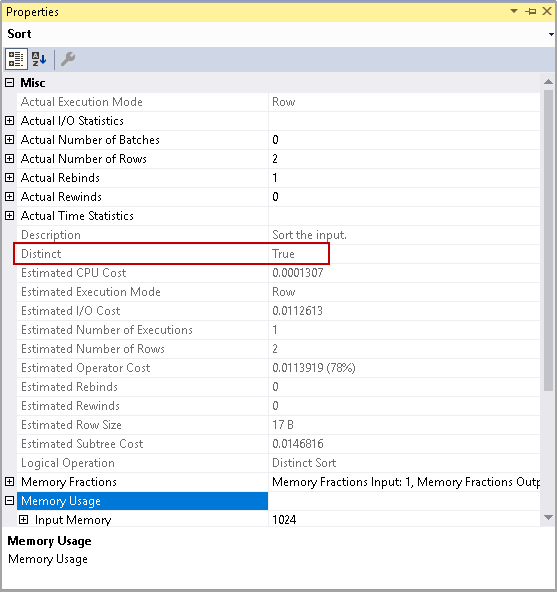
Overview Of The Sql Count Distinct Function

9 Queries To Explain Sql Count Function Mysql And Sql Server

Andrej Baranovskij Blog How To Disable Select Count Execution For Adf Table Rendering

Sql Count The Ultimate Guide To Sql Count Function

How To Find Duplicate Records In Oracle

Tip 152 Get The Record Count In Cosmos Db Azure Tips And Tricks

Sql Tips Check Count Of Records In Temporary Tables From Other Sessions Sql With Manoj

Sql Count Function

Select And Having Count Default Behavior 1z0 061 Oracle Sql
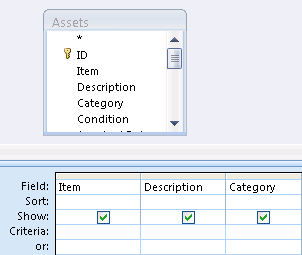
Count Data By Using A Query Access

How To Make Select Count Queries Crazy Fast Brent Ozar Unlimited

Sql Interview Questions Q 1 Write A Sql Query To Fetch The By Mayuri Budake Medium

Sql Count Count Cte Count Column Count Pk X Inner And Outer Joins Database Tips

Single Sql To Count Rows In All Tables By R Andrew Cocks Medium
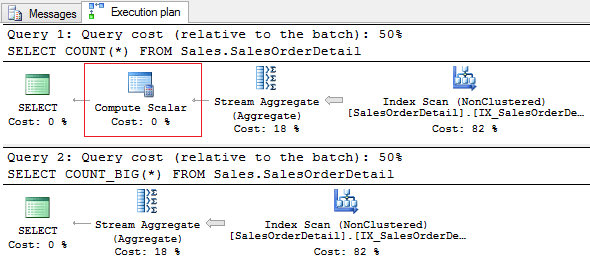
What Is The Fastest Way To Calculate The Record Count Devart Blog

Sql Trivia Difference Between Count And Count 1 Sql With Manoj

Sql Server How To Get Total Row Count From Offset Fetch Next Paging Sql Server Portal

9 Queries To Explain Sql Count Function Mysql And Sql Server

Sql Server Get Query Plan Along With Query Text And Execution Count Sql Authority With Pinal Dave

Sql Query Distinct Group By Stack Overflow

9 Queries To Explain Sql Count Function Mysql And Sql Server

Solved Sql Write A Query To Count The Number Of Items Th Chegg Com

Learn Oracle Count Function By Practical Examples

Avoid Using Count In Sql When You Could Use Exists Java Sql And Jooq

Sql Count And Row Number Function With Partition By For 1 Of N Items

How To Use Rowcount In Sql Server

Count Occurrences Both Greater Than Less Than Or Equal In Mysql Count Occurrences Both Greater Than Less Than Or Equal In Mysql

9 Queries To Explain Sql Count Function Mysql And Sql Server
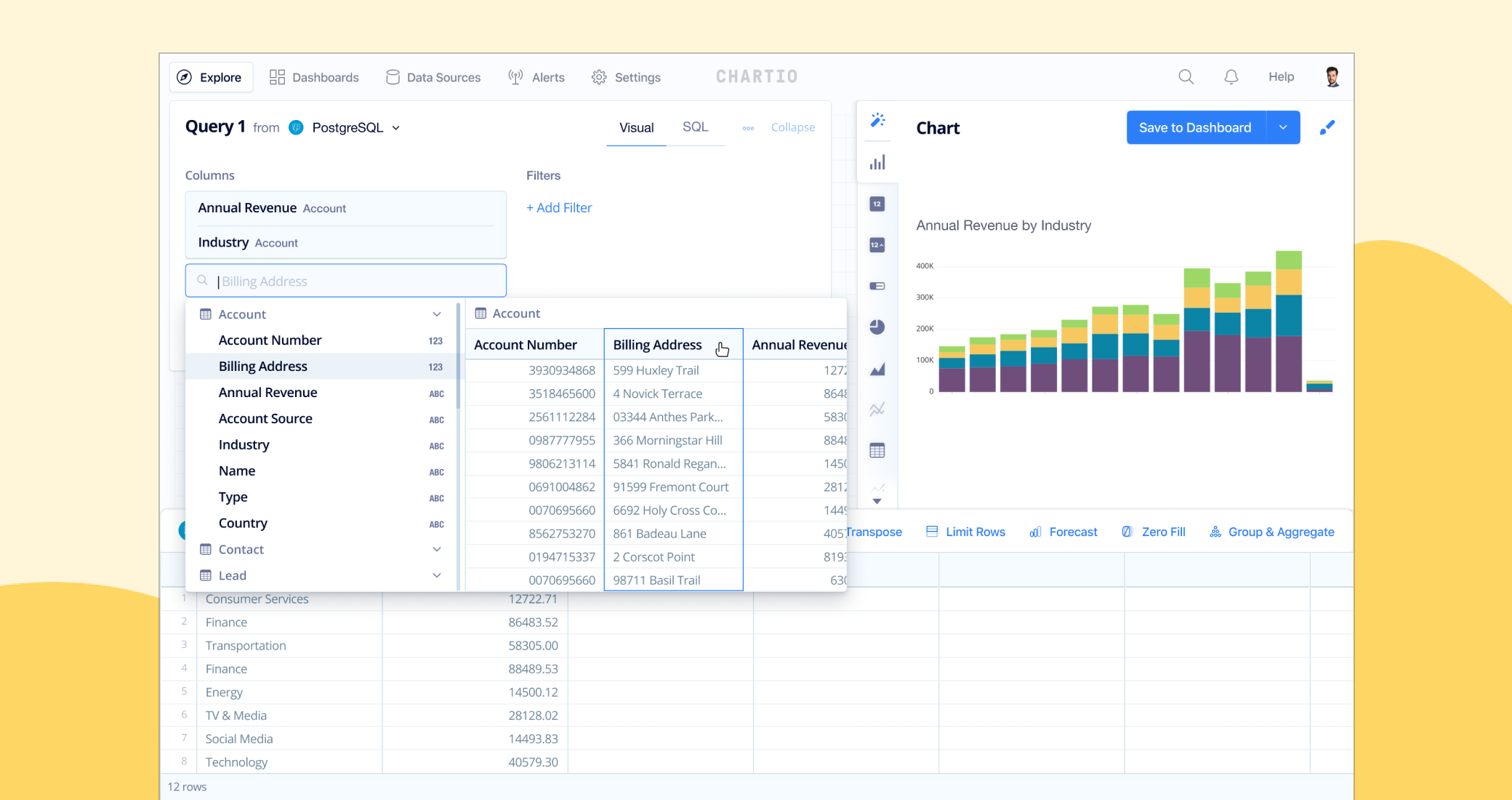
How To Find Duplicate Values In A Sql Table Tutorial By Chartio

Codeigniter Count Query Results Number Of Rows In Table

Oracle Sql Need Help Optimizing Count Distinct Query Stack Overflow

Get Total Number Of Records After Distinct Sql Server Stack Overflow

Hue The Open Source Sql Assistant For Data Warehouses
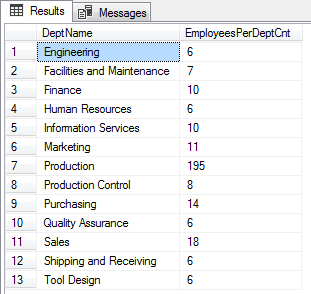
Overview Of Sql Count And Count Big In Sql Server

Sql Server Count Number Of Occurrences Of A Character Or Word In A String

Sql Query To List Only The Count Of Male Students In Each Class Programming Pseudocode Example C Programming Example

Access Create Summary Queries With The Count Option Youtube

Postgres Count With Different Condition On The Same Query Database Administrators Stack Exchange

Counting String Occurrences In Sql

Q Tbn 3aand9gcs0ymc Nfotcssxqugvd9jbahrsswitvhmcwg Usqp Cau
Sql Query Calculate Percentage Per Month Per User Of Total Count

Counting Items With The Sql Api On Azure Cosmos Db Ambiguity Vs Information

Improve Row Count Estimates For Table Variables Without Changing Code Simple Talk
3

Sql Query With Count And Left Join Stack Overflow

Q Tbn 3aand9gctigxqgwowldd4d35itists Akuvps43gukbq Usqp Cau

Sql Server Cursor System Functions Cursor Rows Sql Server Rider

Sql Server Count Function Performance Comparison

Sql Aggregation Queries Using Group By Sum Count And Having Youtube

How To Use Rowcount In Sql Server

Sql Count Returns The Number Of Rows In A Specified Table

Overview Of The Sql Count Distinct Function

Mysql Row Count How To Get Row Count In Mysql

Sql Count The Ultimate Guide To Sql Count Function
1

9 Queries To Explain Sql Count Function Mysql And Sql Server

Sql Count Count Cte Count Column Count Pk X Inner And Outer Joins Database Tips

T Sql Regular Expressions Substring Patindex And Charindex Coding Sight

How To Use Rowcount In Sql Server

Sql Server List Query Plan Cache Size Text And Execution Count Sql Authority With Pinal Dave

Count All Tables Rows In Sql Server

Easiest Way To Find Row Count Of Each Sql Tables Using Queries Coding Sharp

Solved Query Write A Sql Statement To Count The Number O Chegg Com

How Looker Generates Sql

Appropriate Record Counting Outsystems
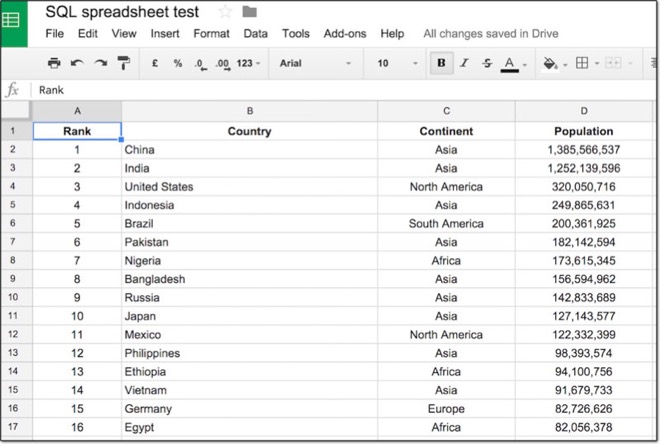
Google Sheets Query Function Learn The Most Powerful Function In Sheets

Sql Count Function

Approximate Count In Ms Sql Using Approx Count Distinct

Sql Aggregate Functions Sum Count Max Min Avg Bi Portal

Sql Server Select With Count Query Stack Overflow

Solved Converting Sql Count Query To Dax Query Microsoft Power Bi Community

Sql Functions Sum Avg Count Etc The Group By Clause

Count And Group By In Sql Data Science And Machine Learning Kaggle

Access Query Count Distinct Values Database Administrators Stack Exchange

Sql Count Function

Sql Count Function

Transact Sql Count Vs Count Column Vs Count 1 The Hammer The Hammer

How To Make Select Count Queries Crazy Fast Brent Ozar Unlimited
Sql Server Difference Between Count Distinct Vs Count All Sql Authority With Pinal Dave

Sql Count The Ultimate Guide To Sql Count Function
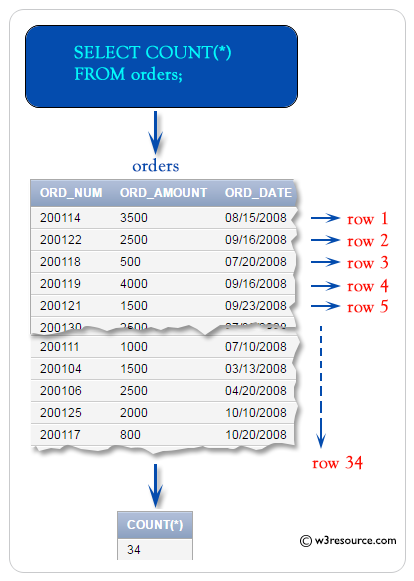
Sql Count Function W3resource

Sql Server Group By

Solved Same Sql Server Query Gives Different Count Of Row Microsoft Power Bi Community

Sql Count Function

Sql Count Function
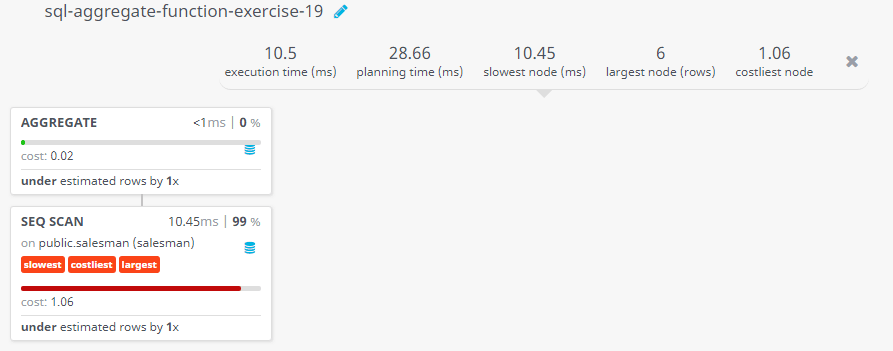
Sql Aggregate Function Count The Number Of Different Non Null City Values For Salesmen W3resource
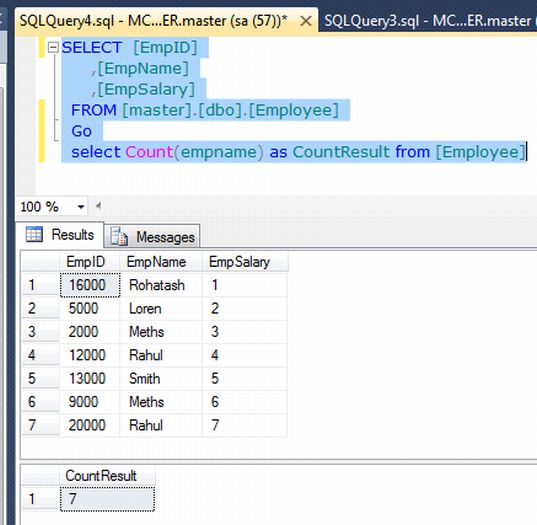
Count All Vs Count Distinct In Sql Server

Avoid Using Count In Sql When You Could Use Exists Dzone Performance

Counting String Occurrences In Sql

Finding Correlated Rows Using Exists Or Count Redgate Software

Tip 152 Get The Record Count In Cosmos Db Azure Tips And Tricks

Sql Count Count Function In Sql Sql Sql Tutorial Learn Sql By Microsoft Awarded Mvp Learn In 30sec Wikitechy

Coldfusion Tips Difference Of Count Between Query Of Query Qoq And Normal Sql Query

Sql Count Function



